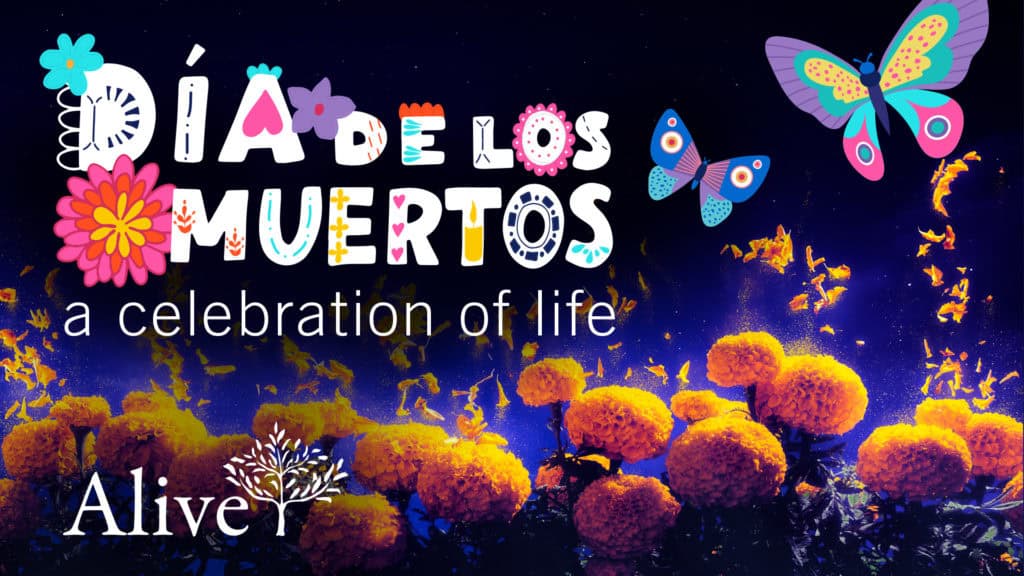An ofrenda, or altar, in Mexico to honor and remember loved ones for Day of the Dead.
Published on September 14, 2021

We’re continuing the Culture and Death series, this time diving into Hispanic and Latinx practices and traditions in observance of Hispanic Heritage Month (Sept. 15 – Oct. 15). In this culture, relationships with immediate and extended family members are very important. Family members often prefer to care for loved ones who are ill or dying as opposed to looking to professional caregivers to take on this role.
Catholicism is the dominant religious tradition and provides many rituals for the dead, such as the holding of Mass at a church prior to burial of the deceased and the observances of All Saints’ Day and All Souls’ Day.
Spain
In Spain it is common for deaths to occur at home. This allows the family to prepare for the death of their loved. When death is near, communion or last rites are offered and usually a rosario is held nine days after the death of a loved one, typically involving flowers, candles, prayers, and the sharing of memories. This practice is also held on the anniversary of their loved one’s death.
South America
As in all of Latin America, South American children are socialized early to understand death. Public expressions of grief are accepted, especially among women. Men, however, are less likely to grieve openly due to the culture of “machismo,” though it is not unacceptable for men to weep.
Mexico and Central America
It is customary for the people of these areas to embrace death as a part of life, therefore there are often long periods of mourning and elaborate funerals to say goodbye to loved ones.
Mexican funeral customs blend indigenous and Catholic traditions. Día de Los Muertos (The Day of the Dead) is one example, which combines remembrance for dead loved ones with family and community bonding. This tradition is now celebrated throughout Latin America and the world. Humorous portrayals of skeletons and death remind the living to make the most of their precious time together. Families build altars, cook and share traditional food to remember loved ones who have died.
An example of a native belief in Central America is the tradition in Honduras of holding a large drum party to honor the deceased one year and one day after his or her death. Drumming continues as long as the food, drink, and money last, which can be for days. This celebration is to help elevate their loved one’s spirit so spiritual evolution can take place.
Caribbean Islands
In Puerto Rico, standing funerals, where the deceased is posed in a way that reflects the life they lived, have become more popular. For example, some families pose the deceased playing games, riding a motorcycle, or dressed up as a superhero as a way to honor their life.
Many Cubans’ spiritual beliefs are a mixture of Catholicism and Santería, and the rituals for death are varied. In Cuba, the deceased is typically buried within 24 hours. Oftentimes, children attend wakes and are seen hovering around the body. This act of “taking care” of the body often falls to the young children in attendance.
A death in the Dominican Republic begins a period of nine days of mourning. These nine days consist of 3 days of grieving, 3 days of silence, and 3 days for release. Many in the Dominican Republic also practice a Caribbean tradition called Nine Nights, which is an extended wake and celebration, lasting nine nights leading up to the funeral with roots in African religious tradition.
What are your traditions and practices for end-of-life? Share them with us: jpropst@alivehospice.org
